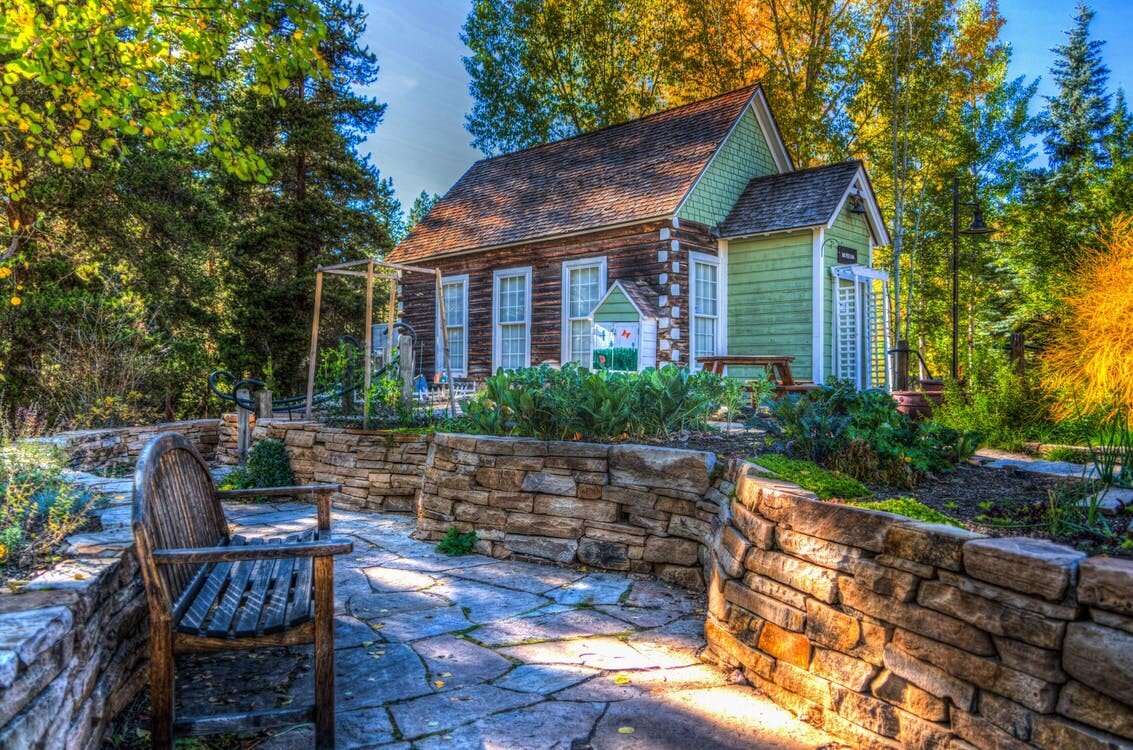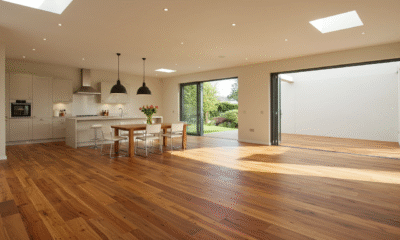Cycling to work, buying from sustainable producers and even shopping locally can all lower your carbon footprint. However, taking small steps towards an eco-friendly home can make a significant dent in your personal carbon footprint.
One of the key ways of creating an eco-friendlier home is to find ways to heat your home more efficiently, both through smarter use of energy and conservation of heat to avoid unnecessary use of energy.
1) Upgrade your boiler
If you have a boiler over 10 years old then you might be running your home in-efficiently. Newer boiler models heat water much more efficiently than older models.
New boilers must be at least 88% efficient with most scoring above 90%. These A-rated boilers tend to be condensing boilers. Condensing boilers don not expel gasses into the air making them more eco-friendly than non-condensing boilers.
2) Underfloor heating
Underfloor heating uses cooler water than radiators. This allows home owners to explore alternative methods of heating out with a boiler. For example, ground source heat pumps extract heat from the ground via buried pipes.
Ground source heath pumps do generate some carbon emissions, but significantly less emissions than conventional heating sources.
Make sure you use Karndean, Amtico or another type of vinyl when installing underfloor heating. Vinyl flooring is typically quite thin meaning heat can rise through the floorboards easily.
3) Loft insulation
In uninsulated homes up to 25% of heat is lost through the roof. This makes loft insulation a great place to start your eco-friendly home plan.
If you decide to get your loft insulated it might be worth it to get your pipes and any water tanks insulated. These additional steps, although small, will increase your efficiency and cut down your energy costs in the long term.
4) Cavity wall insulation

Around a third of all heat loss in uninsulated homes is through the walls. Don’t worry too much though if you live in a newly built home. Houses built after 1990 generally have wall insulation. However, if your home is old, installing cavity wall insulation is a great way to reduce the amount of energy you spend heating your home.
5) Timber structures
When building your property, try and build using timber frames. Keep this in mind when building a house extension as well! Make sure your contractor sources timber frames from sustainable sources. House extensions using sustainable timber frames can save about four tonnes of CO2 when compared to stone-built houses.
6) Energy saving light bulbs

Light bulbs are so small that, whilst we know that we should change them, we sometimes don’t bother too. You would be surprised to know that swapping a traditional light bulb for an energy saving one saves 2000 times the weight of said light bulb in carbon dioxide emissions.
7) Thicker curtains
There’s a ton of factors in your home that you would not relate to heat loss and, in turn, lower energy efficiency. Curtains are one of these factors. Closing the curtains can reduce heat loss by 15-17 per cent.
Choosing thick curtains can increase this percentage.
8) Recycled materials
Using materials that are recycled works in two ways. Firstly, using recycled materials means there is no need for extracting new materials. Extracting new materials could mean cutting down a tree or using gas heavy machines to mine or quarry. Secondly, using recycled materials means no trees or natural habitats must be cut down to extract new materials.
9) Solar panels

Solar panels are an excellent way to generate energy without burning any fossil fuels. Installing solar panels on your home is easy and affordable in 2018. What’s more, the price of solar panels is expected to drop by a further 25% by 2022. Solar panels typically cost around $3 per watt.
10) Double glazed windows
Single glazed windows do not offer much in terms of reducing heat loss. This is because there is only one layer off glass to keep in heat loss. Double glazed windows use two sheets of glass creating an insulating pocket of air between the two sheets that is sometimes filled with glass. With the extra sheet of glass your home is less likely to loose as much heat.
11) Wooden window frames (over metal or UPVC)
UPVC window frames (and doors) are really hard to recycle due to the building debris, steel and other materials that have to be removed before UPVC frames can move further along the recycling chain.
Timber framed windows have a longer life-span than UPVC windows and can be made out of recycled wood.
12) Local materials

Transporting raw materials around the world via vast distribution networks creates a huge carbon footprint. For example, cork is sourced mainly from Spain. Transporting this to America would involve shipping or flying halfway around the world.
Using locally sourced materials cuts down on your project’s carbon footprint.
13) Local tradesmen

Similarly using locally sourced tradesmen can cut down your carbon footprint when building or renovating your home.
Workers need to get to and from a job. Using a worker that is nearby cuts down the time he or she has to drive to get to the job.
14) Ask to see the EPC rating of a home

An EPC rating contain information regarding a home’s energy usage levels. This includes levels of energy used, energy costs and recommendations for lowering energy usage.
Asking to see the EPC rating helps you choose a home that is kinder on the environment.
15) Digital electricity monitors
One of the keys to making your home eco-friendlier is to monitor how much energy you are using. Digital electricity monitors help you understand your electricity usage. You can install most digital monitors yourself. However, bear in mind that most don’t measure gas usage.


 Environment10 months ago
Environment10 months agoAre Polymer Banknotes: an Eco-Friendly Trend or a Groundswell?

 Environment11 months ago
Environment11 months agoEco-Friendly Home Improvements: Top 7 Upgrades for 2025

 Features9 months ago
Features9 months agoEco-Friendly Cryptocurrencies: Sustainable Investment Choices

 Features10 months ago
Features10 months agoEco-Friendly Crypto Traders Must Find the Right Exchange




























